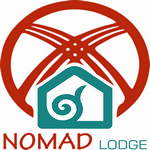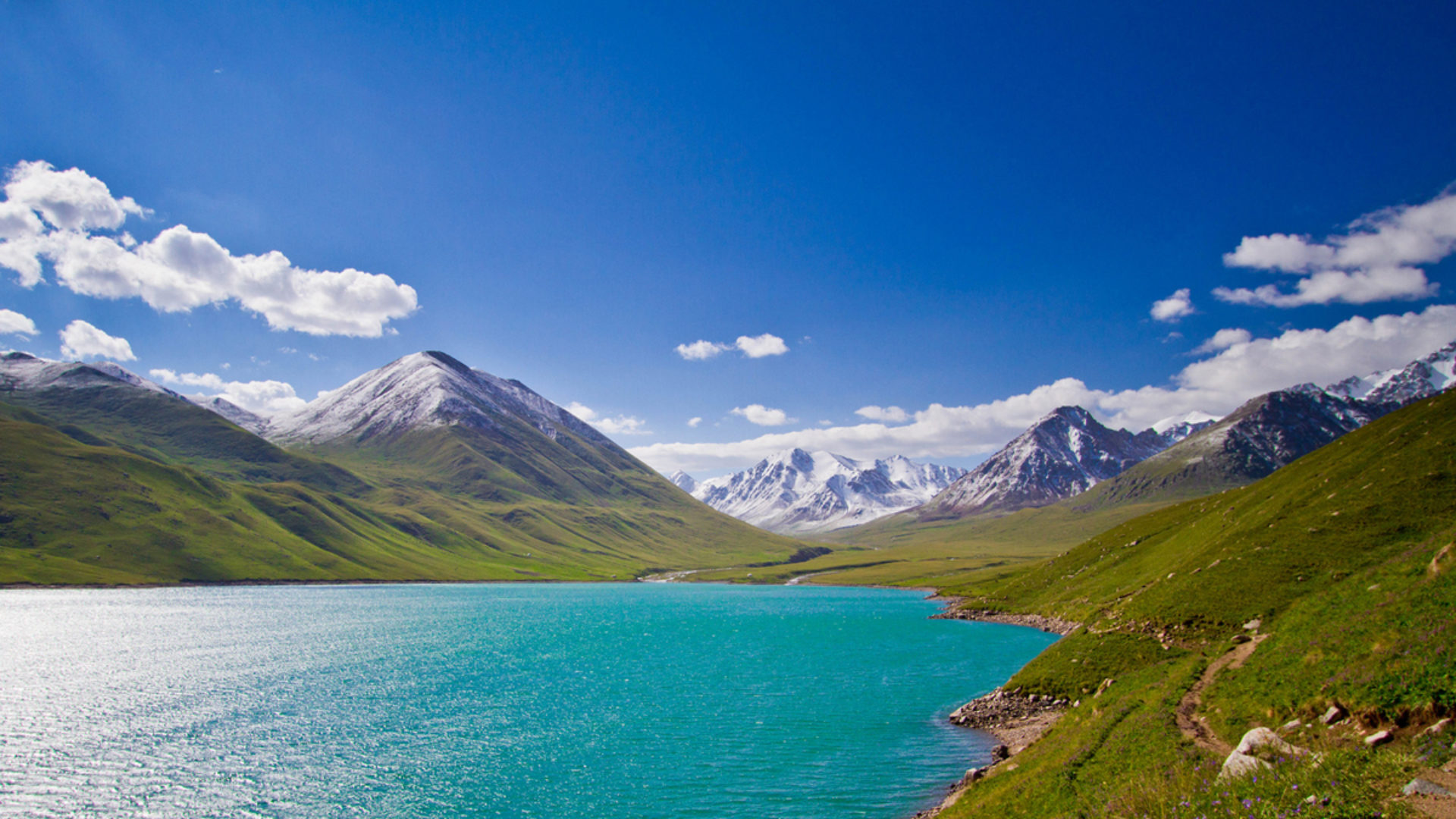Traditional Kyrgyz clothing

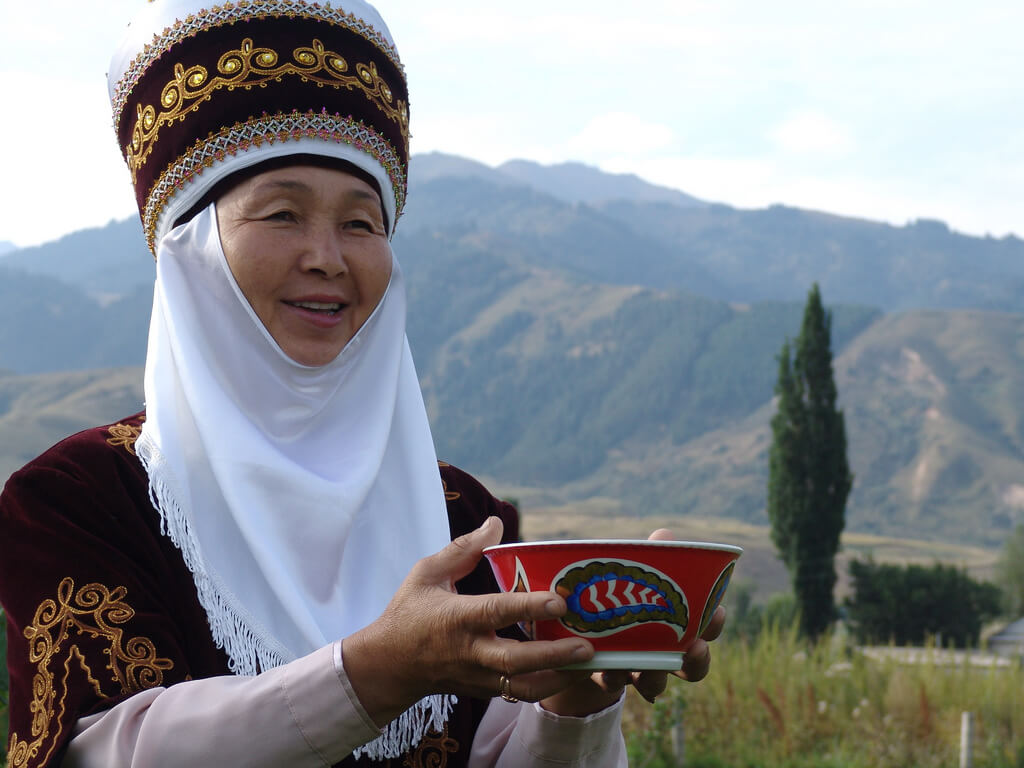
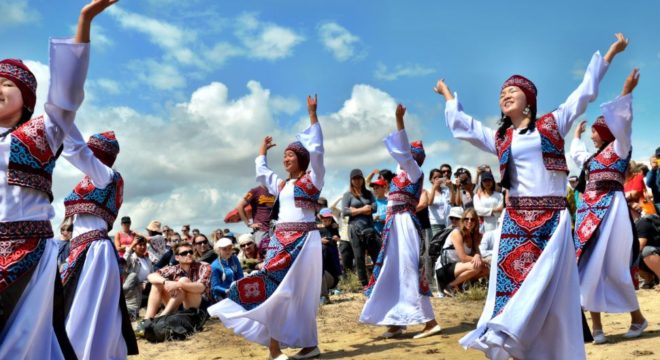
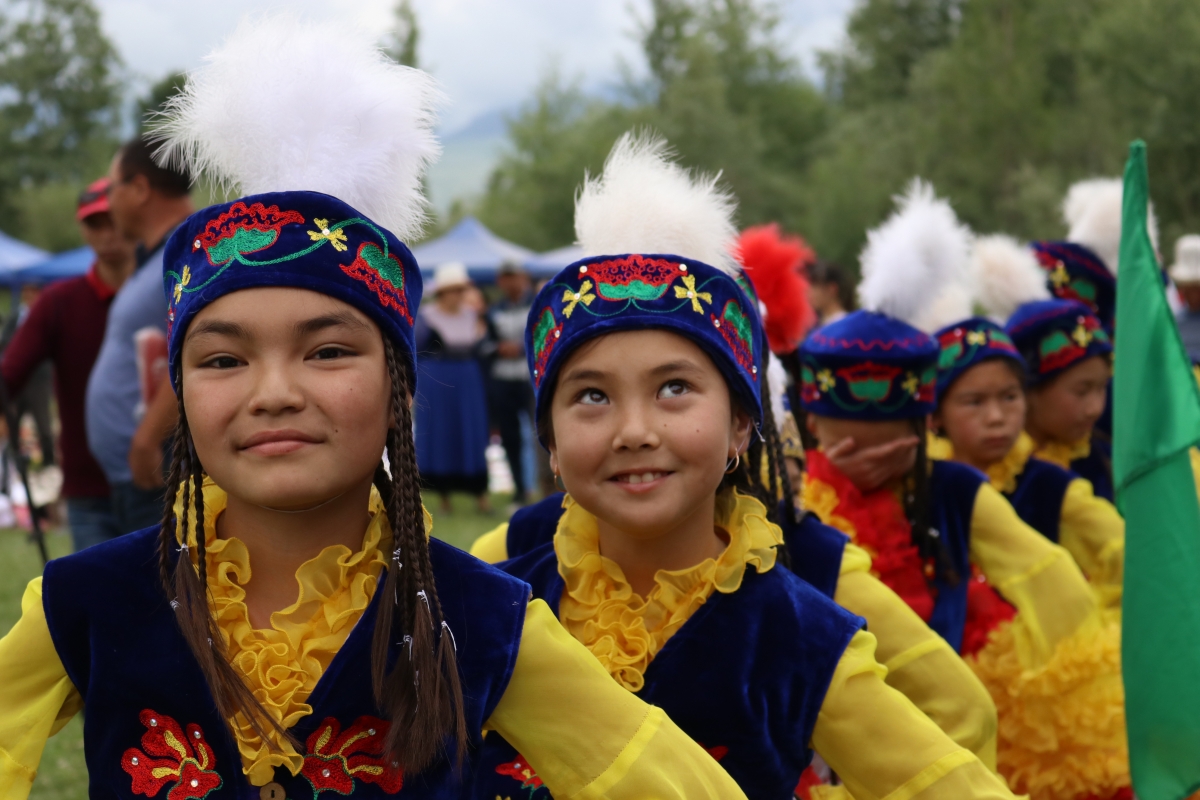
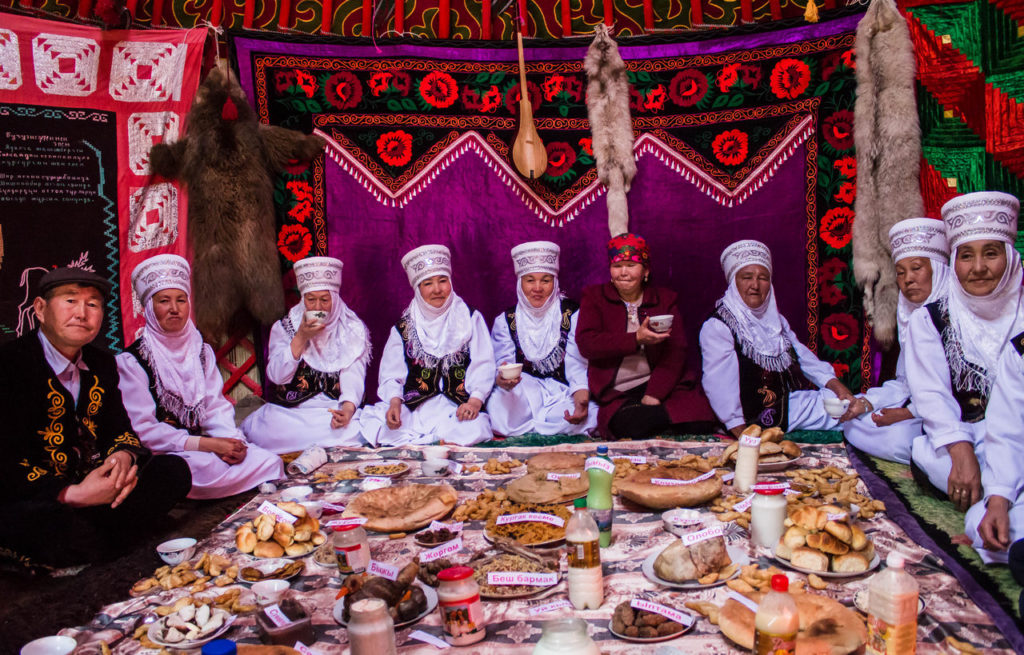





The clothes of the Kyrgyz have always had many peculiar features typical for nomadic clothes. The explanation lies in the historically established way of life. Since ancient times, the Kyrgyz have been engaged in nomadic cattle breeding. Another factor was the climate of the mountainous country with its sharp temperature fluctuations. This causes the need for various types of warm clothes, sometimes used in the summer season. Clothes made of raw domestic wool, fell and skin of domestic and wild animals were widely used.
Women’s wardrobe was decorated with many items of under and outer garments. On the chest of women’s shirts there was always embroidery. If there was no such embroidery, women worn a bib “zhaka”, which was embroidered with colored threads. A unique element of women’s clothing was sumptuous skirt – “beldemchi”. Girls’ headdresses were decorated with birds’ feathers and various jewelry that was sewn to them, like silver, pearls, corals and other precious stones. Such kinds of headdresses are known as skull-caps – “topu”, fur hats – “tebetey”, tall headdresses without tie ears “shokulo” and turban headdresses – “elechek”. The “elechek”, “kelek” or “ileki” headdress was included “takiya” or “kep takiya” that was worn on the head before the turban was wound around. Over dress or chemise was worn a short or long sleeveless jacket “chyptama”, a camisole with short sleeves – “kemsel”, a robe – “chapan”, or a quilted robe – “chapken”. As with men, women’s winter clothes consisted of fur coats – “ichik”.
In nomadic times, as is still the case today, Kyrgyz women grew long hair and twined plaits. They had long velvet stripes in the form of tubes in which they hid their braids – “chachpak”. They were decorated with various types of silver jewellery “chach uchtuk”, “chach monchok”, earrings – “soike”, “soike jalbureech”, breast amulets called “tumar”, “boi tumar”, bracelets – “bilerik”, rings – “shakek” and others.
Kyrgyz men’s clothing also consisted of under and outer garments. The men’s wardrobe had several types of leather and suede pants – “jargak shym”, “kandagai” and “chalbar”. The trousers were wide, the robes were freely tucked in. They were worn by wealthy men. Winter clothes included fur coats, “ichik”. Fur coats of wild animals such as wolf, fox, lynx and others were especially valued. The traditional types of men’s shoes were ankle boots: “chokoy”, “tcharyk”, “paicheki” made of leather. The famouse headwears were “tebetey”, “kalpak” and “malakai”. In addition, an attribute of the men’s suit was a belt “kemer” and a belt “ilgich” with accessories. Belts were worn over a robe, “capken”.
The national clothing was supplemented with jewelry of local craftsmen. The social and family status as well as age of Kyrgyz people was always determined by their clothing.
In the twentieth century, traditional Kyrgyz clothing acquired European features. Some items of men’s and women’s outerwear and headdresses are preserved in their traditional form. Today, Kyrgyz traditional clothes are used as festive, ceremonial and also as theatrical costumes. Clothing with national patterns is very popular now and fashion.
Traditional Kyrgyz clothes can be deciphered according to the Manas era, stone sculptures, records and drawings of travelers and artists.
Nomad Lodge invites you to join a historic journey into nomadic civilization. Try on the style of Kyrgyz nomads and get acquainted with their culture, everyday life. Welcome to Kyrgyzstan for many experiences and discoveries.
